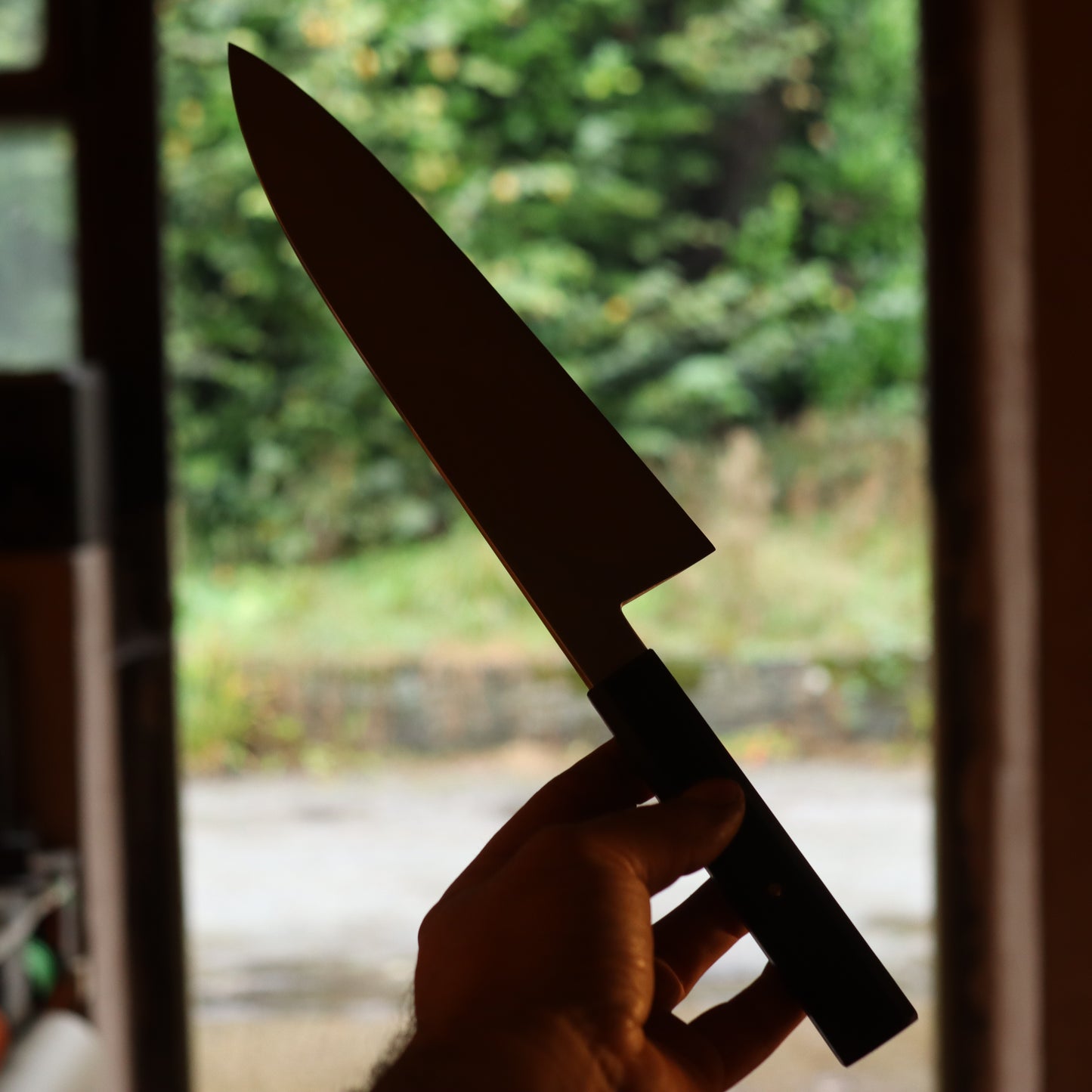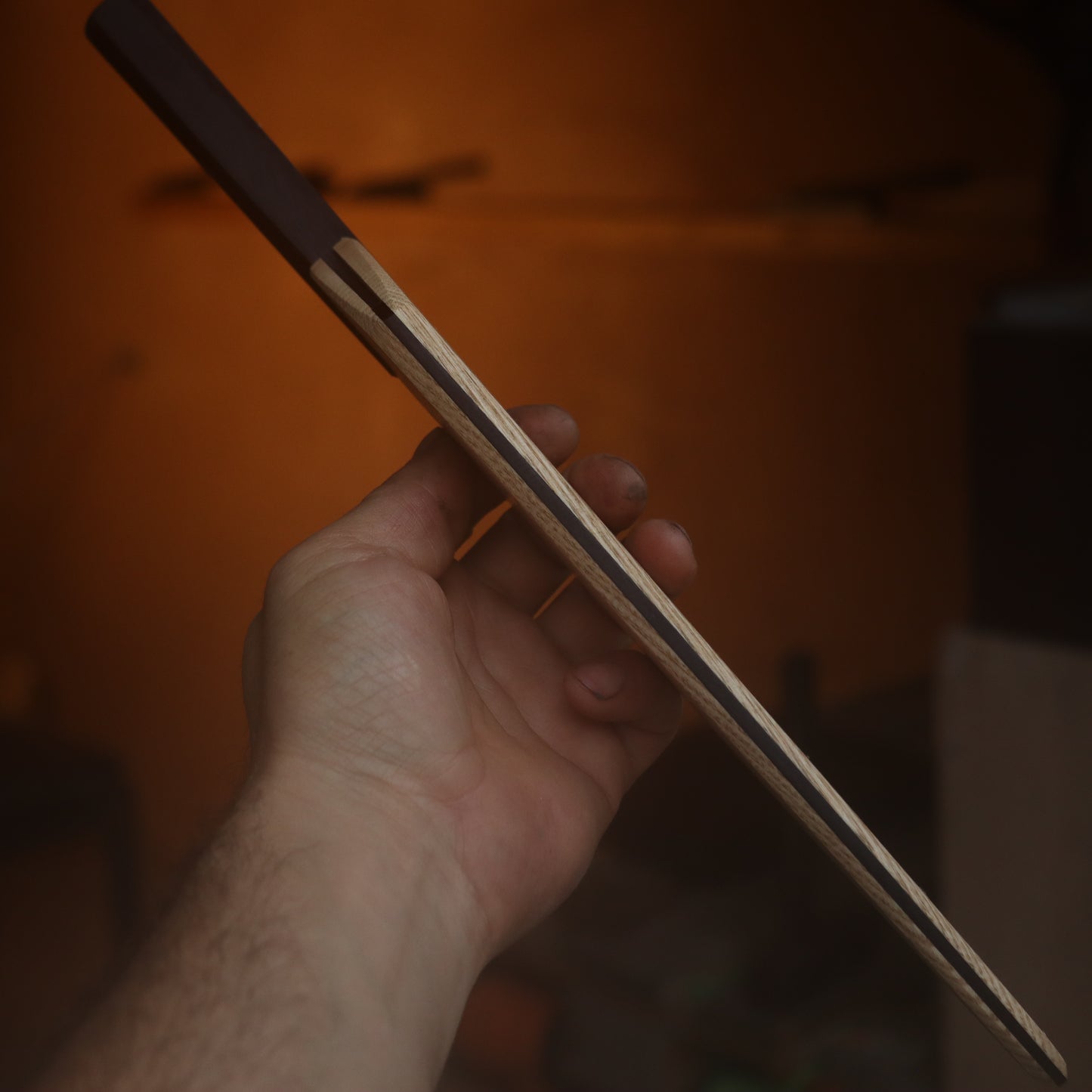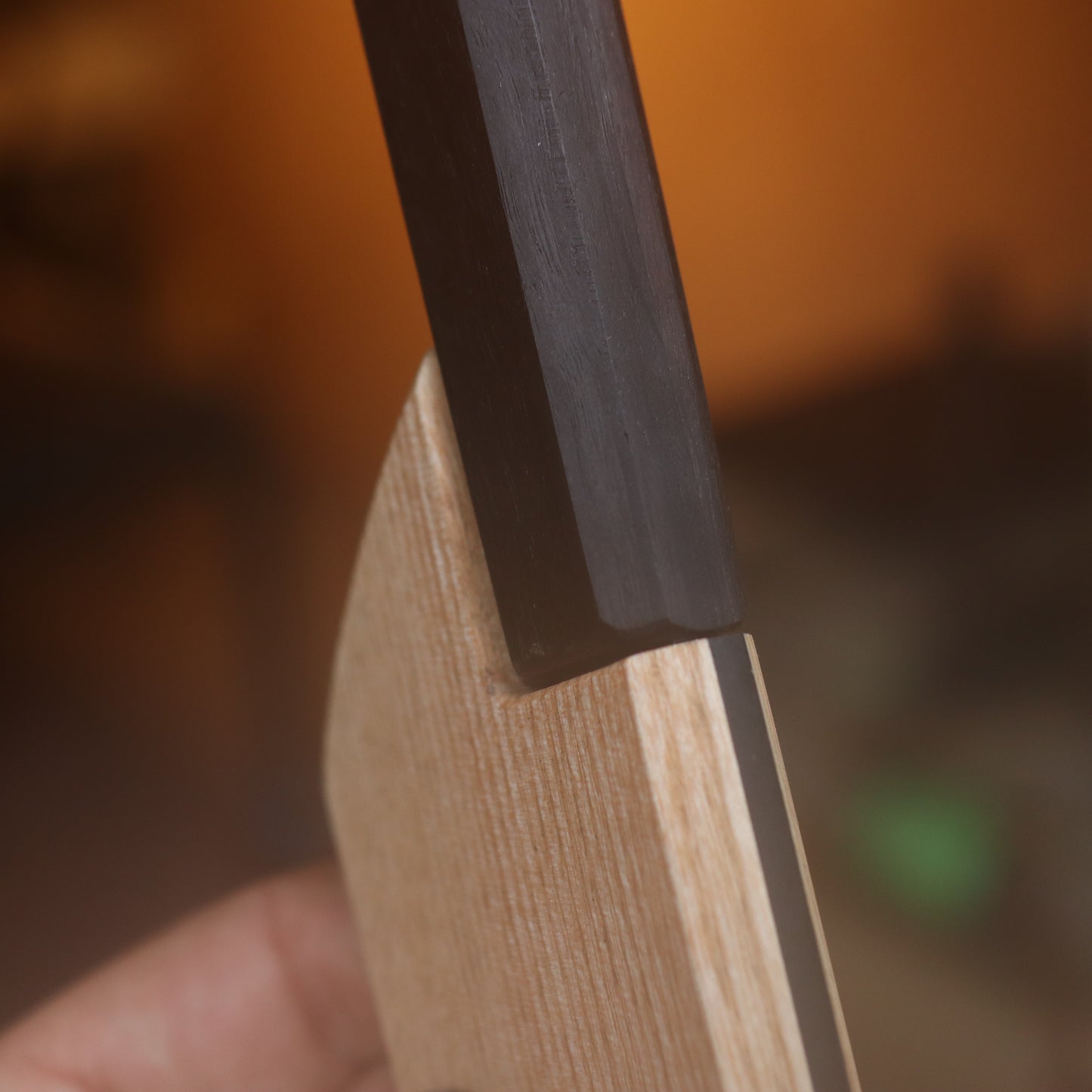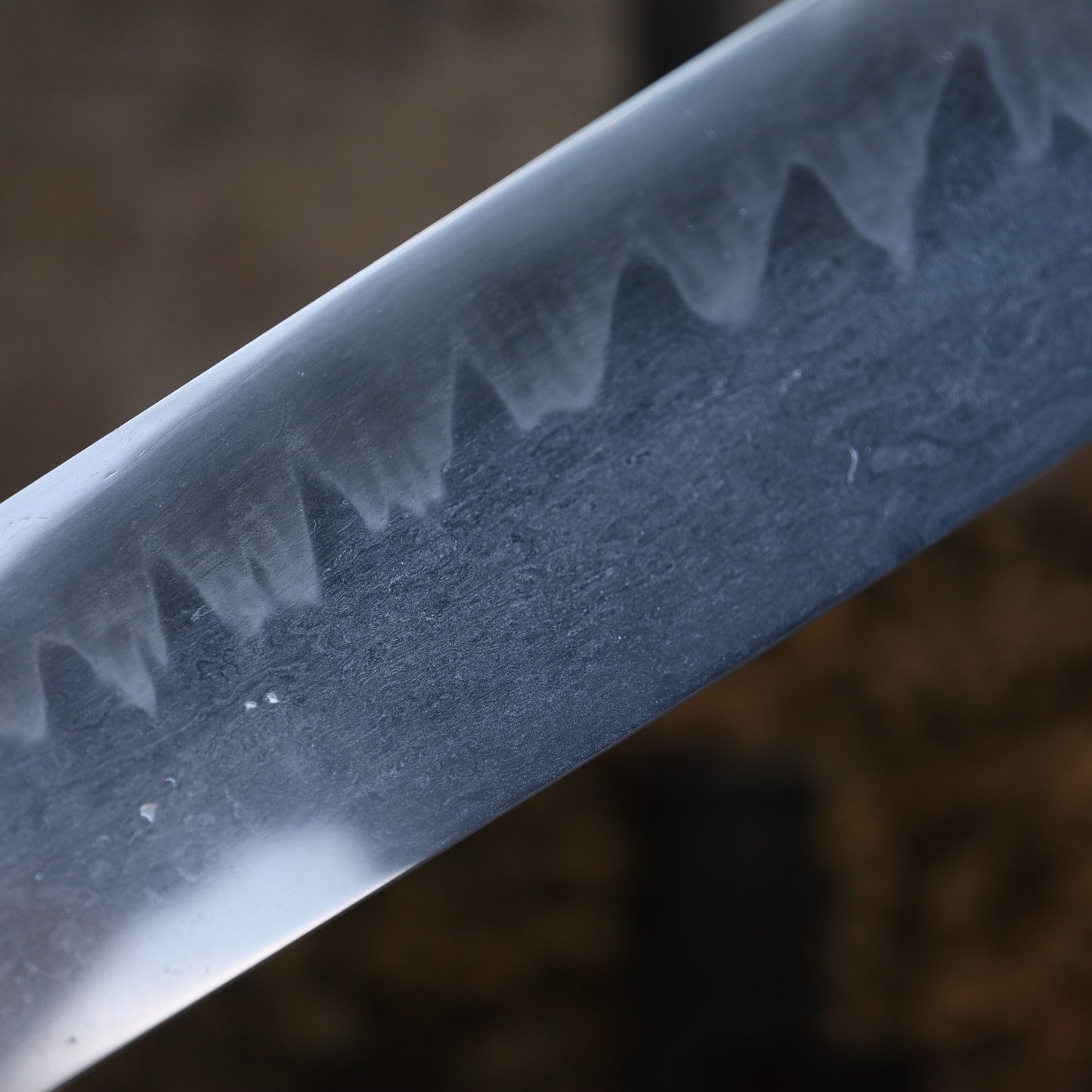Joel Black Knives
Tamahagne Gyuto
Tamahagne Gyuto
Couldn't load pickup availability
Tamahagne gyuto
225mm
55mm tall
5mm 4mm 3mm 2mm 1mm taper
205g including handle
Handle 5500year old bog oak
Stainless steel pin, takedown construction
130mm/20-25mm
Shira Saya
Ash and bog oak
The steel for this one is pretty special, it was made by me and some friends outside my workshop this summer.
We used charcoal from Birchwood forestry and iron ore from xerxes knives with the following composition.
SiO2: 8.65%
Al2O3: 0.68%
CaO: 0.2%
MgO: 0.3%
Mn: 0.088%
TiO2: 0.055%
P: 0.038%
S: <0.002%
This is very similar to the composition of the iron sand which is used to make tamahagne in Japan, or jewel steel.
When smelting steel there are a lot of variables involved to create a steel that is suitable for a chefs knife, the steel needs to come in at the right carbon content, too much and the steel will be brittle and super hard with a large grain structure, too little and the steel won’t hold an edge or harden properly. This is my second attempt at making bloom steel and I learned a lot from my previous failure.
Suffice to say there is a lot of work involved in making one of these, the bloomery takes a day to construct, then the firing takes a day too complete. After this there is considerable forging to do to homogenise the material, this knife had circa 3000 layers in it, each fold crating a more homogeneous material. This steel is then forged into knives, which are heat treated with clay applied to form a hamon, which is a differential heat treat allowing for a hard edge and a soft spine.
I’ve spent quite a lot of time polishing this also, it’s been stone shaped though the coarse grits and then I used paper and pastes to homogenise the finish, this is then put though rounds of light etching and patina removal to bring out the subtle qualities within the steel, there’s bags of hada (woodgrain) and ashi (whisps bits below the hamon) and of course the hamon itself which is a boundary between two different crystal structures of steel.
I’ve dressed the clad up with a big oak handle, which is a takedown construction, remove the steel pin (with the included too) and the handle can be tapped off gently. This is super beneficial with a knife like this whereby someone might like to polish it or maintain it properly.
The saya is bog oak and ash, a little nod to shirasaya which is where a samurai would’ve keep his sword at home, protecting it in an understated way.
Doe to the nature of this material there are a few very minor flaws in the steel, I think these add to the character of the steel and shouldn’t be a problem in use as long at you keep the blade dry and don’t let it rust.
Finally, this is not stainless steel, if you don’t know how to maintain a carbon steel knife please please don’t buy this 🙏
Share











































































